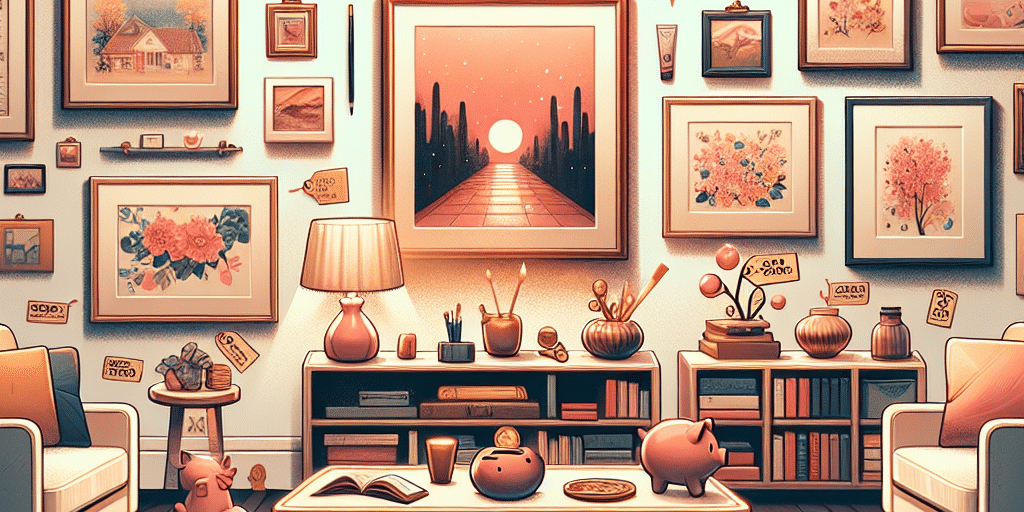Artful Beginnings: How to Start an Art Collection Without Breaking the Bank
Starting an art collection might seem like a pursuit reserved for those with endless disposable income, but the truth is, you don’t need to be a millionaire to enjoy the pleasure and prestige of owning art. With careful planning, an eye for quality, and a bit of savvy, you can build a meaningful collection without breaking the bank. Here’s how to embark on this rewarding journey.
1. Educate Yourself
The first step in starting an art collection is education. Familiarize yourself with different art styles, movements, and mediums. Visit museums, galleries, and art fairs whenever possible. Online platforms such as art blogs, virtual gallery tours, and artist talks can provide invaluable insights. Understanding your tastes and preferences will help you make informed decisions and identify potential treasures.
2. Set a Budget
Once you have a better understanding of the art world, it’s crucial to set a budget for your collection. This ensures you won’t overspend and helps you focus on finding quality pieces within your financial reach. Keep in mind that stellar art doesn’t necessarily come with a hefty price tag; there are plenty of beautiful and affordable works available if you know where to look.
3. Start Small with Emerging Artists
Emerging artists often sell their work at more affordable prices compared to established names. Supporting new talent can be financially accessible and rewarding, as these pieces might appreciate over time. Attend student exhibits, local art fairs, and browse online marketplaces like Etsy or Saatchi Art to discover emerging artists.
4. Explore Different Mediums
Paintings often dominate conversations about art collections, but exploring other mediums can yield stunning results without the commensurate cost. Consider drawings, prints, photography, or sculptures. These forms can provide a unique charm and are sometimes available at a fraction of the price of paintings.
5. Leverage Online Resources
The digital age has democratized art acquisition. Online platforms such as Artsy, 1stDibs, and Artfinder offer vast selections of artworks at various price points, and allow you to compare prices and artists easily. Be sure to read reviews, check artist credentials, and, if possible, view works in person before making a purchase.
6. Understand Provenance and Limited Editions
Provenance and edition size can affect the value of artwork. Research the history of a piece and be aware of edition sizes for prints and photographs. Limited editions often have higher value, but also come at a higher price. Educating yourself on these aspects can help you make more strategic purchases.
7. Negotiate Prices Where Possible
Unlike other retail scenarios, prices in art can sometimes be negotiable. If you’re buying directly from an artist or at a gallery, it doesn’t hurt to politely inquire about discounts or pricing flexibility, especially if you’re buying more than one piece or are a repeat customer.
8. Patronize Local Artisans and Nonprofits
Local artisan markets and nonprofit art organizations can be treasure troves for affordable artwork. They often carry unique pieces that reflect local culture and creativity. Buying from local sources not only supports your community but also allows you to acquire unique works that might not be available elsewhere.
9. Think Long-Term
Building an art collection is a marathon, not a sprint. Don’t rush into purchases; take time to find pieces that truly resonate with you. Over time, as your taste and financial means evolve, your collection can grow and diversify.
10. Connect with Other Collectors
Join local art groups or online forums dedicated to art enthusiasts and collectors. These communities can provide support, advice, and opportunities to learn more about art collection trends and must-see events. The shared knowledge from seasoned collectors can be invaluable as you begin your own journey.
In conclusion, starting an art collection is an enriching endeavor that need not be restricted by financial constraints. By educating yourself, setting a budget, and sourcing wisely, you can curate a collection of meaningful works that bring joy and aesthetic value to your life. As you grow your collection, remember that art is not only an investment in culture but a personal journey of discovery and enjoyment.







